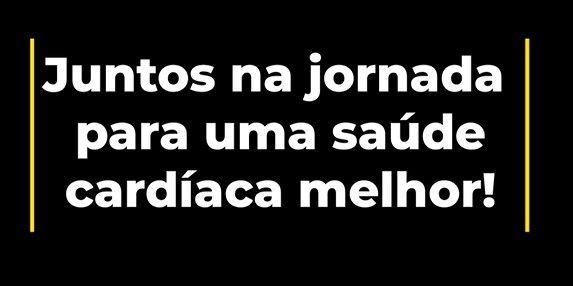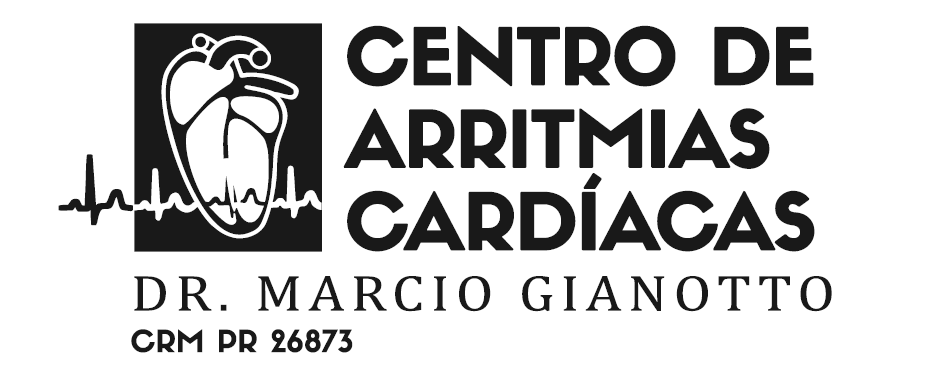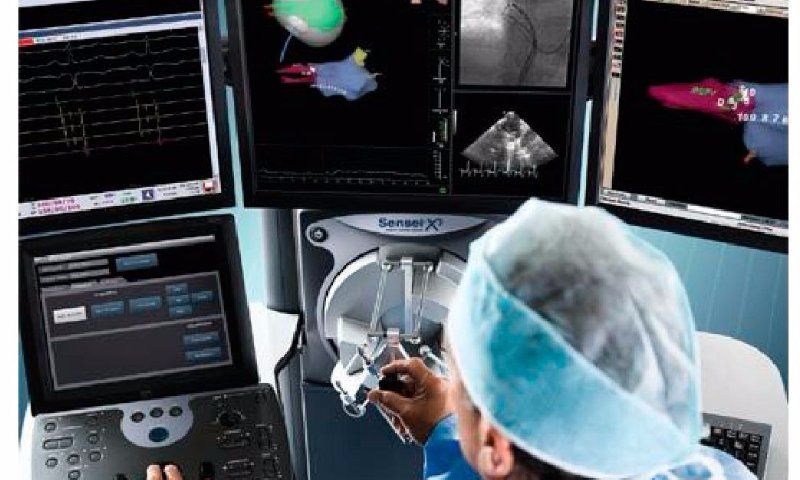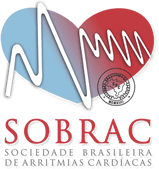CRMPR 26873 EQR's: 18399, 811 and 19314.:
Cardiology
Clinical Arrhythmia
Electrophysiology
Do you live far away and would like a medical opinion?
Participate in our second medical opinion program.
It's simple, fast and safe.
Cardiac arrhythmias are a group of conditions that affect the rate and rhythm of the heartbeat. Here are 6 important facts on the topic:
1. Types of arrhythmias:
Cardiac arrhythmias are a group of conditions that can be classified in different ways, depending on the origin, frequency and rhythm of the heartbeat. This categorization is important so that the doctor can better understand the patient's condition and choose the most appropriate treatment.
One of the ways to classify arrhythmias is according to their origin, which can be atrial or ventricular. Atrial arrhythmias occur when there is a problem with the electrical conduction of the heart in the upper part (atria), while ventricular arrhythmias occur when the problem occurs in the lower part of the heart (ventricles).
Another way of classification is based on the frequency of the heartbeat. Arrhythmias can be bradycardic, when the heart beats slower than normal, or tachycardic, when the heart beats faster than normal. This can cause symptoms such as dizziness, fatigue and shortness of breath.
The classification of arrhythmias can also be done based on the rhythm of the heartbeat. Some arrhythmias can cause the heart to beat irregularly, as in atrial fibrillation, while others can cause the heart to beat in a rhythmic pattern but at an abnormal rate, as in sinus tachycardia.
Additionally, it is important to understand that some cardiac arrhythmias are benign and do not cause serious symptoms or health risks. Others, however, can be more serious and require more aggressive treatment, such as catheter ablation or the placement of a cardiac stimulation device, such as a pacemaker.
2. Causes of arrhythmias:
Cardiac arrhythmias are a common condition that affects millions of people around the world. They can occur in people of all ages, including children, adolescents, adults and the elderly. Arrhythmias can be caused by a variety of conditions, including structural problems in the heart, heart disease, hormonal disorders, and the use of certain medications or drugs.
Structural problems in the heart can cause cardiac arrhythmias when there is a change in the shape or size of the heart. These changes can interfere with the heart's electrical conduction, which can lead to irregular heartbeats. Heart disease can also cause arrhythmias, especially in cases of heart failure, cardiomyopathy, and coronary artery disease.
Hormonal disorders can also trigger cardiac arrhythmias. One example is hyperthyroidism, a condition in which the thyroid gland produces too many hormones. This can lead to an increase in heart rate and, in some cases, arrhythmias. The use of certain medications, such as beta blockers and calcium channel blockers, can cause cardiac arrhythmias in some patients.
Additionally, the use of recreational drugs, such as cocaine and amphetamines, can cause cardiac arrhythmias. These drugs can increase heart rate and blood pressure, which can lead to irregular heartbeats. Chronic alcohol use can also increase the risk of heart arrhythmias, especially in people with preexisting heart conditions.
It is important to highlight that, in some cases, the cause of cardiac arrhythmias is not known. These arrhythmias are called idiopathic and can occur in healthy people without any underlying conditions.
3. Symptoms of arrhythmias:
The symptoms of cardiac arrhythmias can vary from person to person and can be mild or severe. Some people may not have any symptoms, while others may experience significant symptoms that affect their quality of life. The most common symptoms of arrhythmias include palpitations, shortness of breath, dizziness, fainting, chest pain and fatigue.
Palpitations are a common symptom of cardiac arrhythmias and are described as a feeling of an irregular, fast, or pounding heartbeat. Palpitations may be felt in the chest, throat or head and may be accompanied by other symptoms such as shortness of breath or dizziness.
Shortness of breath is another common symptom of cardiac arrhythmias and occurs when the heart is not pumping enough blood around the body. This can lead to a feeling of shortness of breath or difficulty breathing. Shortness of breath can occur during physical activity or even at rest.
Dizziness and fainting are also common symptoms of cardiac arrhythmias. This occurs because the brain is not receiving enough blood when the heart is beating irregularly. Dizziness can be mild or severe and may be accompanied by other symptoms such as weakness and nausea.
Chest pain is a less common symptom of cardiac arrhythmias, but it can still occur. Chest pain can be described as pressure or tightness in the chest and can be confused with heart pain from other causes, such as angina.
Finally, fatigue is a symptom that can occur with cardiac arrhythmias and is described as a feeling of tiredness or weakness. Fatigue can be caused by a lack of oxygen in the body due to decreased blood flow.
It is important to recognize these symptoms in order to seek appropriate treatment for cardiac arrhythmias. Early diagnosis and appropriate treatment can reduce the risk of serious complications, such as stroke and heart failure.
4. Diagnosis of arrhythmias:
The diagnosis of cardiac arrhythmias may involve several tests and procedures, depending on the type and severity of the arrhythmia. One of the most common tests is the electrocardiogram (ECG), which is a simple and quick test that measures the electrical activity of the heart. The ECG can help identify cardiac arrhythmias and other heart rhythm abnormalities.
In addition to the ECG, ambulatory cardiac monitoring (Holter) is another useful test for diagnosing cardiac arrhythmias. The Holter is a portable device that is attached to the patient's body and records the electrical activity of the heart over a longer period of time, usually 24 to 48 hours. This allows doctors to assess the frequency and severity of arrhythmias during the patient's everyday life.
The tilt test is a procedure used to diagnose syncope, which is a sudden fainting caused by a temporary decrease in blood flow to the brain. During the test, the patient is placed on a table that is tilted vertically upward while the heart's electrical activity is monitored. This can help identify arrhythmias that can cause syncope.
The electrophysiological study (EPS) is an invasive procedure that is performed in a hospital or clinic and is generally reserved for more serious cases of cardiac arrhythmia. During EPS, a catheter is inserted into a vein in the arm or leg and guided to the heart, where it is used to measure the heart's electrical activity and identify the exact location of the arrhythmia.
In some cases, other complementary tests may be necessary, such as imaging tests, such as echocardiography or cardiac magnetic resonance imaging, to evaluate the structure and function of the heart. Accurate diagnosis is essential to identify the underlying cause of arrhythmias and determine the most appropriate treatment for the patient.
5. Treatment of arrhythmias:
Treatment for cardiac arrhythmias can vary depending on the type and severity of the arrhythmia, as well as the underlying cause. In some cases, lifestyle changes may be enough to control arrhythmias, including reducing alcohol and caffeine consumption, stopping smoking, managing stress and adopting a healthy, balanced diet.
When lifestyle changes are not enough, the use of antiarrhythmic medications may be necessary to control heart rate and rhythm. These medications are prescribed by your doctor based on the type and severity of the arrhythmia and can help prevent more serious complications, such as stroke and heart failure.
In more serious cases, invasive procedures may be necessary to control arrhythmias. Ablation is a minimally invasive procedure in which the doctor uses a catheter to destroy small areas of heart tissue that are causing the arrhythmia. Pacemaker implantation is a surgical procedure in which a device is placed under the skin and connected to the heart to help regulate the heart rhythm. Cardiac defibrillator implantation is a similar procedure, but the device is capable of detecting and stopping more serious arrhythmias that can lead to cardiac arrest.
It is important to remember that treatment for cardiac arrhythmias is personalized for each patient and may involve a combination of lifestyle changes, medications and invasive procedures. The objective is to control arrhythmias and prevent more serious complications, such as stroke, heart failure and sudden death. Regular follow-up with your doctor and compliance with the prescribed treatment plan are essential for effective control of cardiac arrhythmias.
6. Prevention of arrhythmias:
In addition to the risk factors mentioned, other health conditions can also increase the chances of developing heart arrhythmias, such as high blood pressure, diabetes, coronary artery disease and thyroid problems. Controlling these conditions and receiving appropriate treatment can help prevent arrhythmias from occurring.
Adopting healthy habits can help prevent the development of heart arrhythmias. This includes following a healthy, balanced diet, low in fat and sodium, and engaging in regular physical activity. Physical activity can improve heart health and reduce the risk of heart disease, which consequently reduces the chances of developing arrhythmias.
Other prevention measures include avoiding excessive alcohol and tobacco consumption, reducing daily stress and controlling blood pressure and cholesterol levels. Sleeping well and controlling sleep apnea can also be important to prevent arrhythmias from developing.
Finally, it is important that people who have a family history of cardiac arrhythmias or other heart diseases are regularly monitored by a doctor and undergo routine exams for early detection of possible heart problems. Early diagnosis and treatment are essential to prevent more serious complications and ensure heart health.
These are just some of the most popular topics related to cardiac arrhythmias. However, it is important to remember that proper diagnosis and treatment depend on the evaluation of a specialist doctor. If you have symptoms of arrhythmia or a family history of heart disease, be sure to seek medical help.

Do you know what Vasovagal Syncope or Fainting is?
Have you ever heard of arrhythmia ablation?
Ablation for Atrial Fibrillation and Other Complex Arrhythmias.
Complex ablations for the treatment of arrhythmias such as Atrial Fibrillation and cicatricial Ventricular Tachycardia are being carried out in Maringá with the help of new equipment, previously only available in large medical centers in São Paulo and other capitals.
Click for information
Doctor Qualified by SOBRAC.










